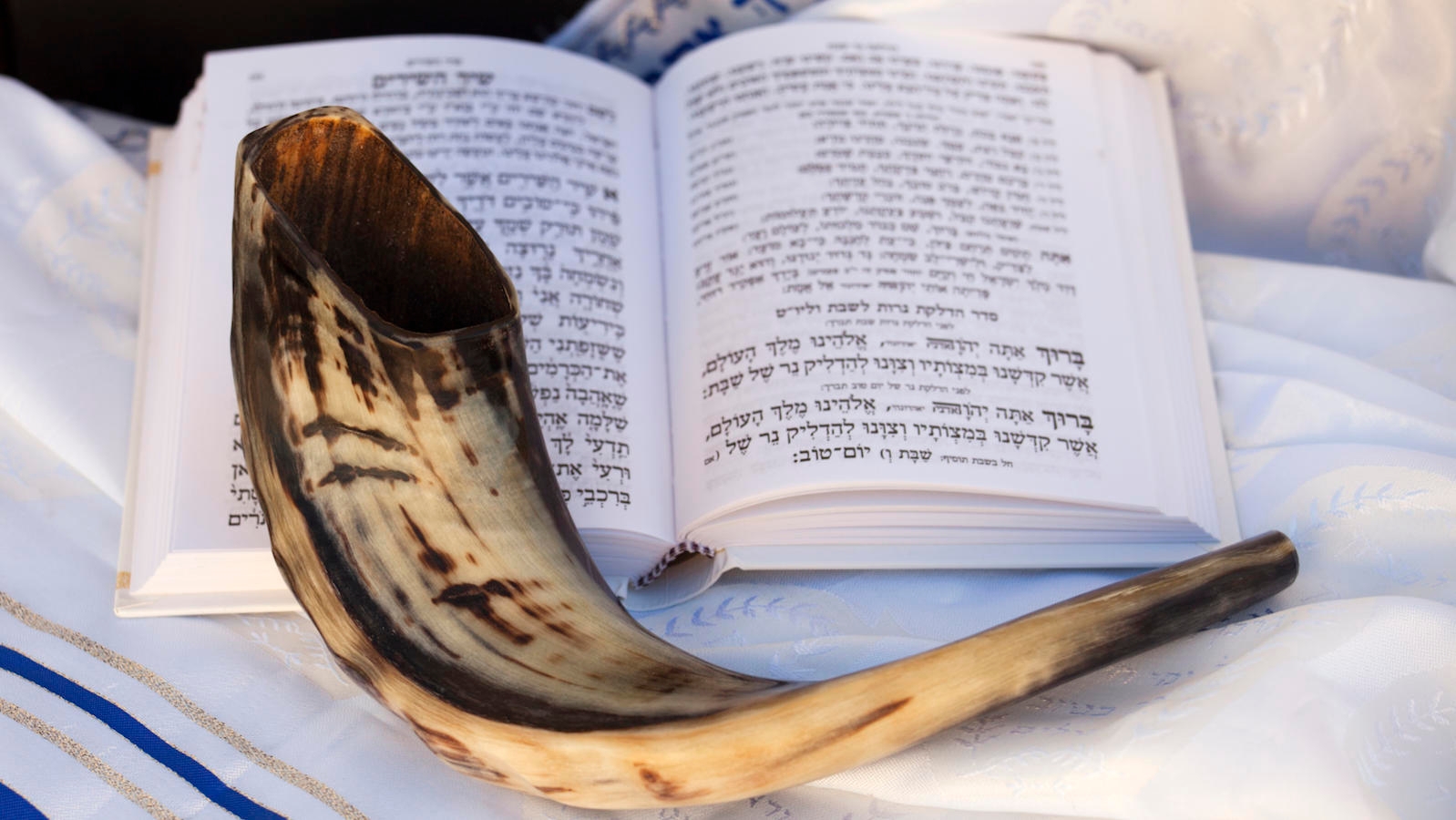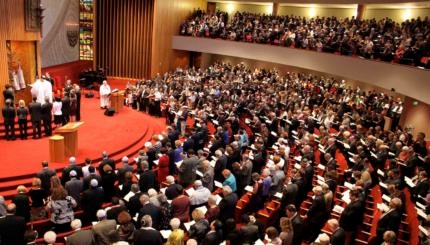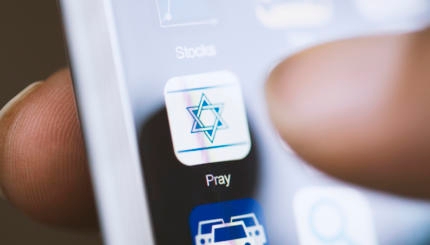Although we tend to unite Rosh Hashanah (the New Year) and Yom Kippur (the Day of Atonement) in our thinking as the High Holidays or the Days of Awe, the two holidays are distinct in their themes and observance. Nevertheless, the liturgical texts for the two holidays often are put into one book, the High Holiday Mahzor (literally “cycle,” here “festival prayer book”), and this forces us to look at the two holidays together.
The Rosh Hashanah service is distinguished from the standard festival prayer services in five major ways.
1) the use of a distinctive set of beautiful melodies,
2) the inclusion of lots of liturgical poetry (Piyyut, plural: Piyyutim),
With your help, My Jewish Learning can provide endless opportunities for learning, connection and discovery.
3) the recitation of the prayer “Avinu Malkenu” (Our Father, Our King)
4) the blowing of the shofar (the ram’s horn), and
5) the recitation, in the Musaf (“additional”) service, of verses on the themes of God‘s sovereignty (Malkhuyot), God’s consciousness of humanity and the Jewish people (Zikhronot, literally “memories”), and God’s past and promised redemption (Shofarot, referring to the shofar as a symbol or herald of that redemption).
Only the last four leave their mark on the text in the Mahzor. The liturgical poetry, which in medieval times was a standard part of the Shabbat or festival prayers but which nowadays is only common on the High Holidays, has been inserted in three main places: in the first blessing before the recitation of the Shema, and in the reader’s repetitions of the Amidah during both the morning service (Shaharit) and the Musaf service. These focus primarily on images of judgment and God’s kingship; these themes also pervade the Avinu Malkenu, which is recited after the Amidah of the morning service.
The shofar blowing varies in different communities, although a guiding principle is that one should hear 100 calls of the shofar. The primary time for hearing the calls of the shofar comes during the Torah service, before the Sifrei Torah (Torah scrolls) have been returned. Additional opportunities for shofar blowing (and fulfilling the quota of 100) are during the Musaf Amidah and during the Kaddish Shalem (the full Kaddish) at the end of the service.
The most significant variation, however, is the inclusion of the three sections of Biblical verses in the Musaf known as Malkhuyot, Zikhronot, and Shofarot. The inclusion of these sets of ten verses results in an increase in the number of blessings in the Musaf Amidah to nine. The particular choice of verses draws on all parts of the Bible (Torah, Prophets, and Writings), and specifically includes passages that are drawn from the Torah and Haftarah (prophetic) readings for the holiday, and from the Psalms.
Yom Kippur
The Yom Kippur service is distinguished by several major additions:
1) the Kol Nidrei service (annulling unfulfilled vows),
2) the confession of sins (vidui),
3) the inclusion of lots of liturgical poetry on themes of the day,
4) the focus on the biblical ceremony of purifying the Sanctuary (the Avodah liturgy),
5) the recitation of the legend of Jewish martyrs (Eileh Ezkerah),
6) the recitation of the book of Jonah as a Haftarah during the afternoon service, and
7) the addition of a fifth service at the close of Yom Kippur called Neilah (“the closing of the gates”).
The themes of sin and ridding ourselves of sin dominate the Yom Kippur liturgy. The worship begins before sundown with the Kol Nidrei pronouncement, which explicitly permits those who have sinned (i.e., everyone) to stay and participate and hopefully repent. Prominently, several long passages called Selihot (requests for forgiveness) and two alphabetical acrostics (Ashamnu and Al Heyt) are repeated multiple times; these detail common sins, from A to Z, comprising a communal confession. The other added passages convey a sense of the magnitude of the day (the Avodah) and the long-term impact of sin (Eileh Ezkerah).
Haftarah
Pronounced: hahf-TOErah or hahf-TOE-ruh, Origin: Hebrew, a selection from one of the biblical books of the Prophets that is read in synagogue immediately following the Torah reading.
Rosh Hashanah
Pronounced: roshe hah-SHAH-nah, also roshe ha-shah-NAH, Origin: Hebrew, the Jewish new year.
Shabbat
Pronounced: shuh-BAHT or shah-BAHT, Origin: Hebrew, the Sabbath, from sundown Friday to sundown Saturday.
shofar
Pronounced: sho-FAR or SHO-far, Origin: Hebrew, a ram’s horn that is sounded during the month of Elul, on Rosh Hashanah, and on Yom Kippur. It is mentioned numerous times in the Bible, in reference to its ceremonial use in the Temple and to its function as a signal-horn of war.
Torah
Pronunced: TORE-uh, Origin: Hebrew, the Five Books of Moses.
Yom Kippur
Pronounced: yohm KIPP-er, also yohm kee-PORE, Origin: Hebrew, The Day of Atonement, the holiest day on the Jewish calendar and, with Rosh Hashanah, one of the High Holidays.
Mahzor
Pronounced: MAKH-zore, Origin: Hebrew, literally “cycle” the mahzor is the special prayer book for the High Holidays, containing all the liturgy for Rosh Hashanah and Yom Kippur.



